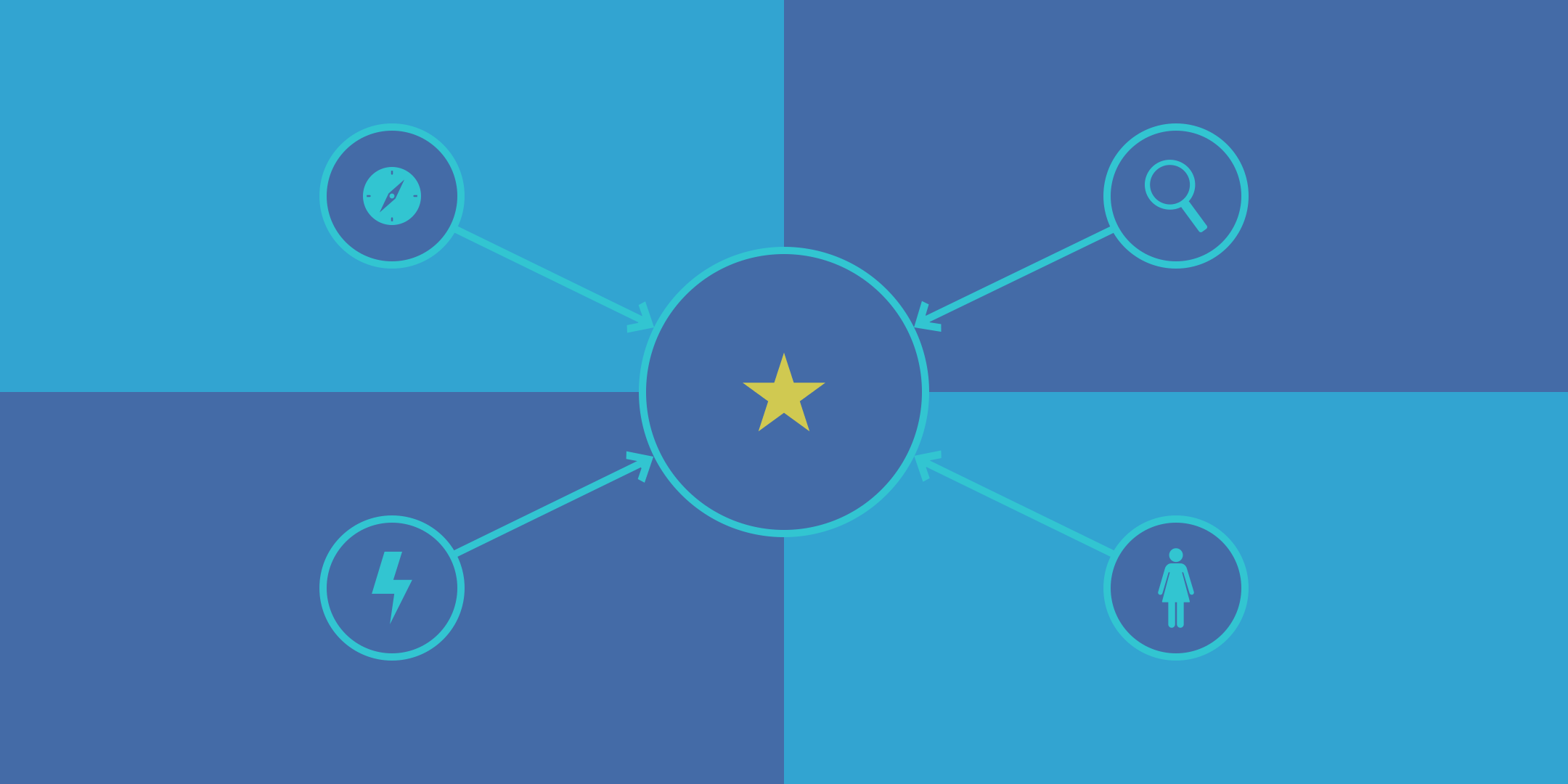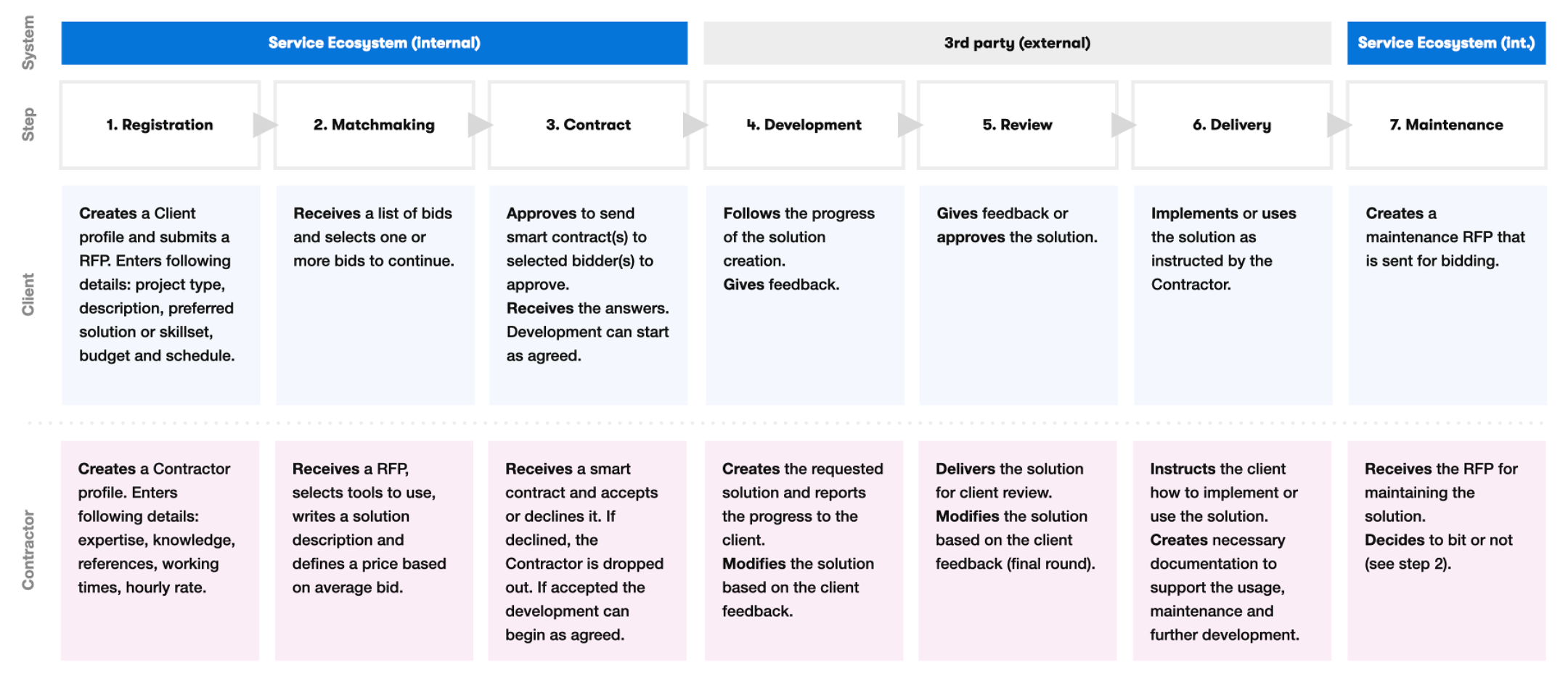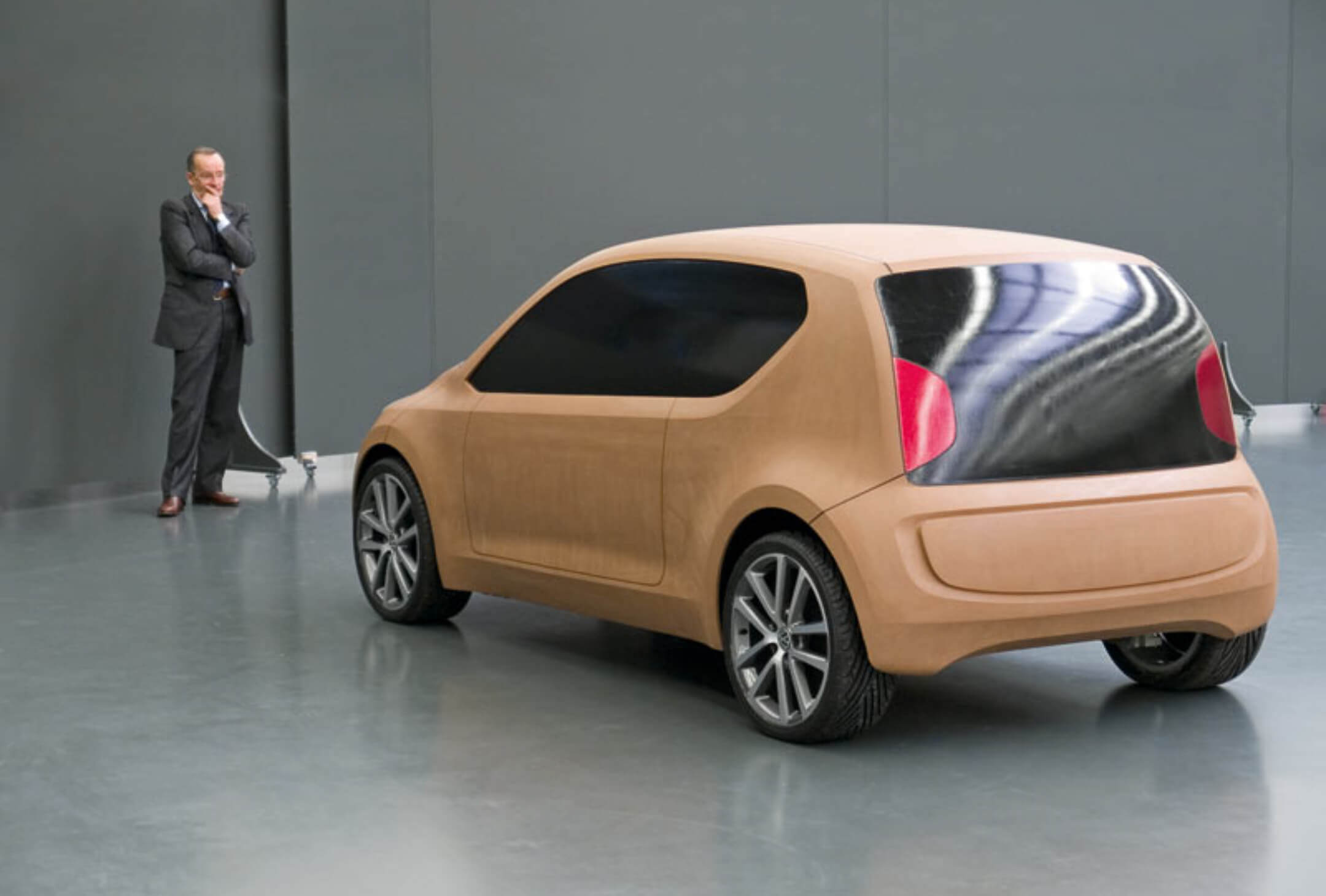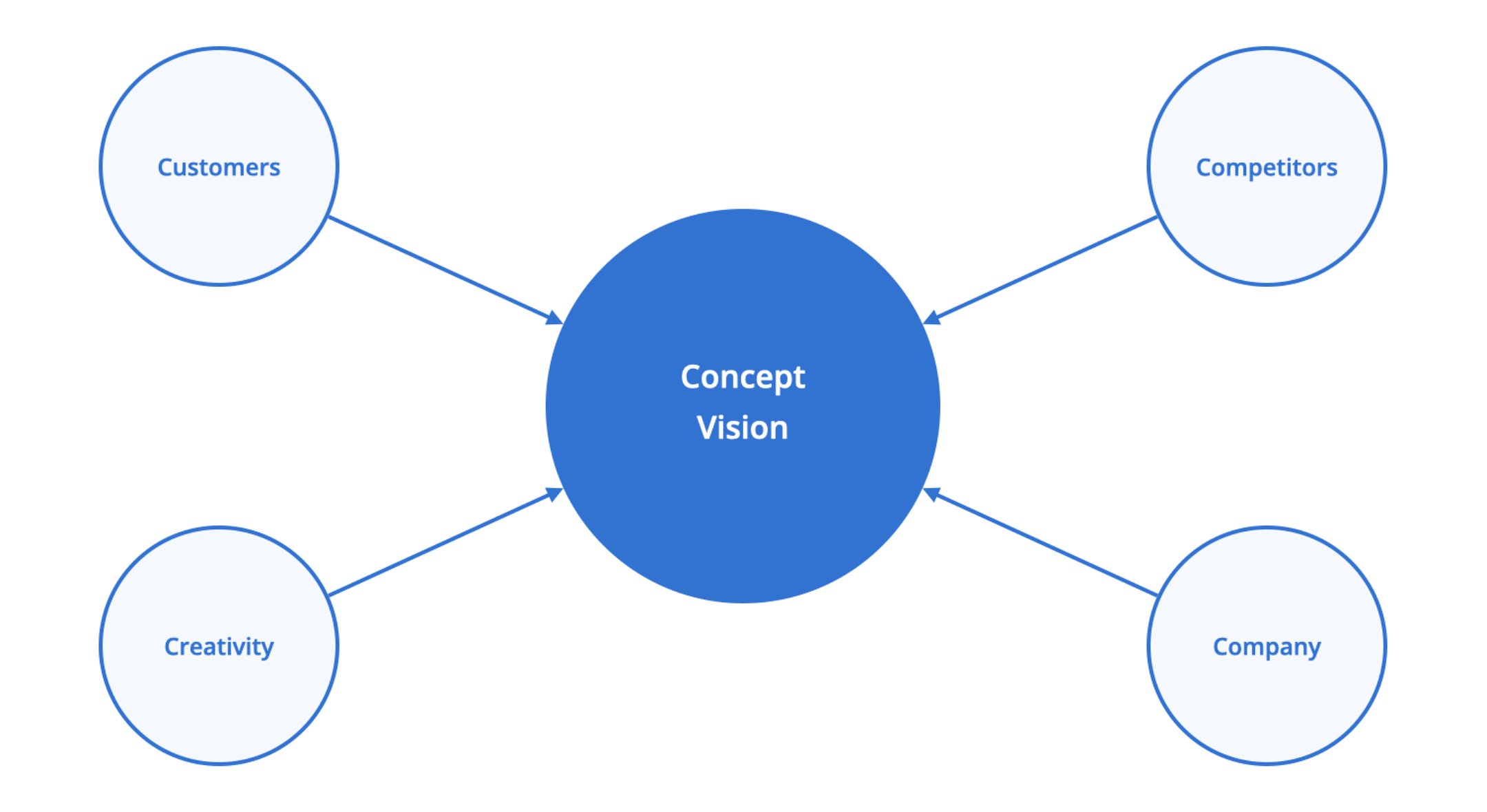Article
Lost Art Form of Concept Design
Crystallizing an idea into tangible format
In today's design landscape, with fragmented processes and specialized roles, concept design seems to have become a lost art form in the digital space. I believe it's time to revive concept design as both an activity and a critical role. In this article, we'll explore how concept design can bring value to businesses by fostering creativity and strategic innovation.

Introduction
I've often encountered designers, especially juniors or those focused on operational tasks like UI design, who believe a prototype is the only documentation needed for a project. It's naive to think that a prototype alone can provide management or investors with the information needed to make important decisions. They need more than visuals; they require the reasoning behind why something should be created to make informed decisions. That's where concept design comes in – it provides the necessary foundation for strategic decision-making.
What is Concept Design?
A concept represents any idea that's far from ready for production. In my eyes, any work is a concept until it's in production. Concept design typically documents or visualizes that early-stage idea. It may include images, workflows, blueprints, sales pitches, and written statements that explain the primary idea, the problems it solves, and the desired outcomes. One of my early mentors emphasized that an early concept draft can be purely textual – it doesn't always need visuals. Some concepts are more mature than others; early drafts focus on describing the idea, while mature concepts require more structure to make them concrete.
Concept design can also serve sales and marketing purposes, such as raising funding. In these cases, adding HYPE or WOW factors can help engage investors emotionally. These concept designs are often more entertaining than purely informative.
The most important function of a concept design is answering the following questions:
- Whom is it aimed for?
- Why should it be made?
- What benefits or solutions does it offer?
- How does it differentiate from what's already in the market?

Example of a service ecosystem's concept design, illustrating the stakeholder journey and interactions within the system to provide a clear understanding of roles, relationships, and the system's operational principles.
Digital Concept Design
My expertise lies in the digital space. How can the digital world benefit from concept design? Digital concept design draws inspiration from industries like physical product manufacturing and the car industry, where concept design is a standard practice for ideating new products, such as smartphones or car models. In the car industry, concept design often starts with mood boards that create an atmosphere, reflecting the emotions a new model aims to evoke in consumers. Clay models are still in use and crafted to make the concept tangible. When done well, concept design beautifully blends high-level vision with detailed craftsmanship.

Volkswagen Group chief designer Walter de'Silva inspecting the clay model of the UP! concept, a critical step in refining the design and ensuring it aligns with the brand's vision and design principles.
Digital concept design also borrows from architecture and the film industry, where concept design is pivotal. We've all seen architectural competition entries with beautifully rendered concepts, and in the film industry, storyboards visually map out the entire film in a comic-strip-like format. In the end, it's all about effective communication.
In the digital space, concept design often focuses on service and product concepts, but it also integrates explorative, visionary, business, and strategic elements. It's not uncommon for digital concept design documents to combine aspects from analytics, prototyping, business & service design, and strategic marketing. The objective is to crystallize vague ideas into something understandable and tangible. Another goal is to convince the decision makers that the concept is worth investing and developing.
Often, digital concept design revolves around technology and innovation, with AI playing a growing role. AI is now frequently used for ideation, with AI-generated concept designs for futuristic products, although they can sometimes feel stereotypical (think robots and flying cars). Still, there are AI-driven innovations already in production, like AI-generated gins and wines, proving that anything is possible.
This is the creative magic missing in today's digital landscape, which has become overly practical. As digital services become more complex, so do the ideas behind them, making them harder to communicate clearly. Concept design helps simplify and communicate these complex ideas, making them understandable and ready to be built for the market.
Progress over Process
Concept design doesn't align easily with Agile methodologies due to the vague nature of transforming ideas into concrete concepts. Concept design is often a series of exercises aimed at communicating a core idea, and more important than the process is making progress. While some concept design projects may align with User-Centric Design or Design Thinking, often the most effective "process" in concept design is simply a deadline. If the concept must be ready in four weeks, the activities and methods adapt to meet that timeline.
As Mark Boulton, a seasoned design leader, aptly described the true nature of design, the same principle applies to concept design:
“Design is not art. It's about crafting solutions to real issues.”
To ensure progress, I often rely on strategic frameworks like 4 C's, 4 P's, KANO, VRIO, REAN, and the Marketing Funnel. I'll walk through my favorite framework, the 4 C's (Customers, Competitors, Company, and Creativity), which I modified from the original 3 C's to include Creativity. It's flexible and works well in concept design but can be applied to any design or strategic challenge.
Customers
Analysis of potential or existing customers to identify their pain points, desires, and needs. Leverage existing customer data or conduct new market studies to ensure the concept aligns with market demands. Uncover the target market and determine whether the concept fits their expectations, ensuring a strong market fit from the beginning.
Competitors
A thorough analysis of competitors to identify they're offerings and how to differentiate. Break down their branding, packaging, features, pricing, and customer experiences. Ask critical questions: What are the minimum expectations of customers? How can the concept exceed these expectations and stand out? Understanding competitors ensures the concept is positioned for success in a competitive market.
Company
Assess your company's capabilities and resources. Evaluate stakeholders, required skills, potential budgets, business case calculations, and market size estimates. Consider creating a roadmap to communicate the required development efforts. A solid understanding of your internal capabilities ensures that the concept is feasible and can be executed effectively.
Creativity
Focuse on injecting innovation into the concept by drawing inspiration from market trends, social media, entertainment and other industries. The goal is to make the concept unique and memorable, tapping into ideas that challenge the norm and create WOW factors.
By addressing all four C's, the concept begins to take shape and the project gets a solid start.

A visualization of my 4 C's framework, illustrating how each element – Customers, Competitors, Company and Creativity – contributes to refining and evolving the ultimate vision for the concept. The framework is an adaptation of Kenichi Ohmae's Strategic Triangle, commonly known as the 3 C's model.
Benefits of Concept Design
Concept design fosters blue-sky thinking, removing limitations like budget or feasibility, allowing for free-form idea generation that often leads to disruptive innovation. It serves as a communication tool, helping stakeholders understand the concept's vision and goals.
Ian Peterman, Author of Conscious Design, couldn't have said it any better:
“Without concepts, you'll never get to a final design.”
Concept design is vital for management decisions, market testing, project planning, and even securing funding or solicit bids from vendors. It's one of today's most important documents, often overlooked due to the reliance on lean practices that downplay documentation.
Summary
In essence, concept design transforms an early idea into something concrete and tangible, envisioning the desired outcome. Anyone can participate in concept design, and I encourage it. The best part? Despite crystallizing the idea, no decisions are final, meaning concepts can be canceled without significant loss. A well-executed concept design lays the foundation for future development efforts.
Bringing back concept design as both an activity and a dedicated role offers a valuable solution in today's fragmented design landscape. With specialized roles now spread across business, strategy, customer experience, and product & service design, there's often a need for someone to synthesize these elements into a cohesive vision early in the process. A concept designer can bridge the gaps between disciplines, ensuring that the initial direction aligns with both creativity and strategy from the very beginning.
Alina Wheeler, author of Designing Brand Identity, captures the essence of concept design:
“Design is intelligence made visible.”
Concept design is a broad topic, spanning multiple disciplines, and I will write a series of articles exploring this lost art form within the digital space. This is just the first – enjoy and stay tuned! ▪